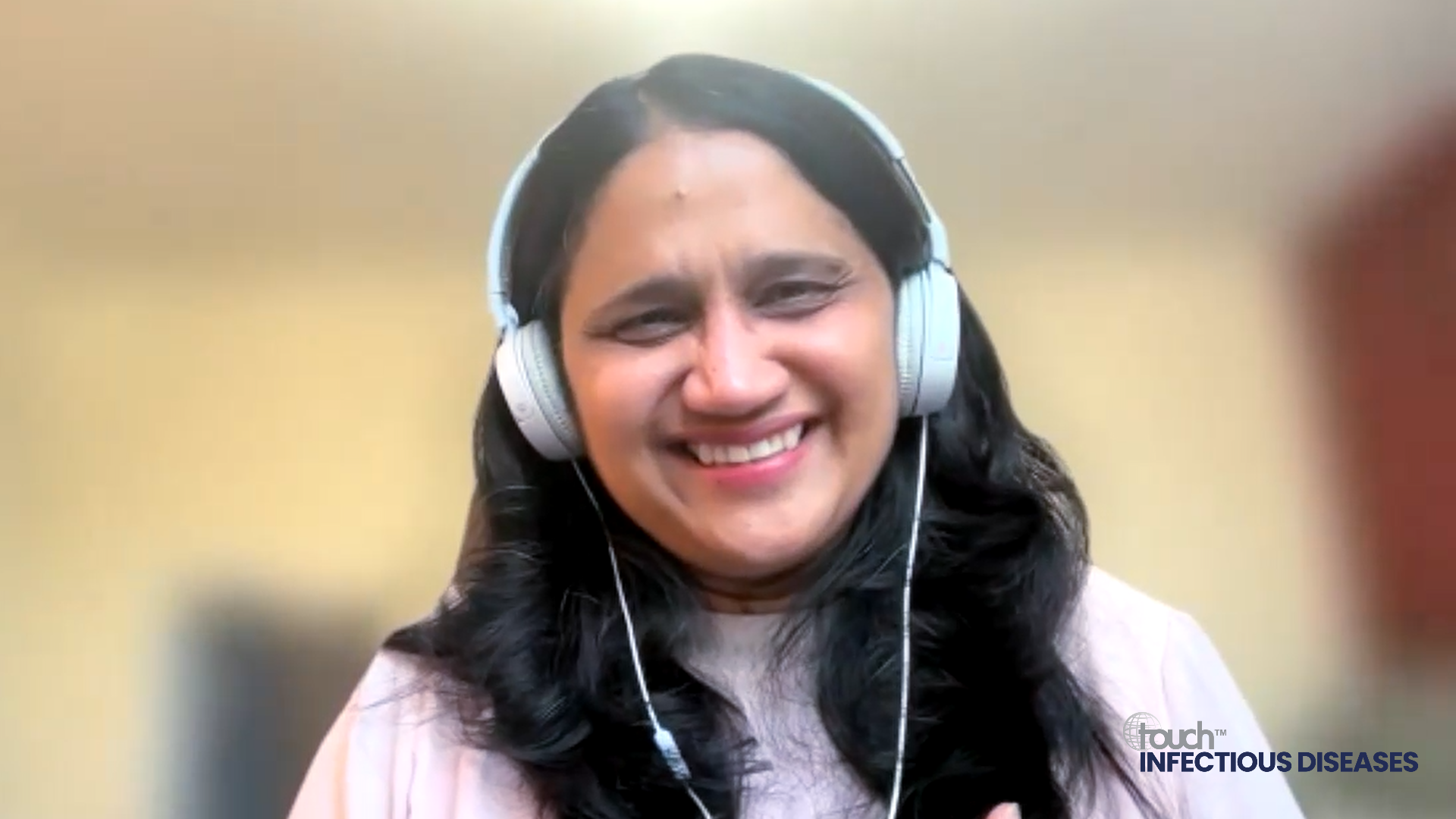Molnupiravir vs nirmatrelvir/ritonavir for COVID-19 in high-risk patients with haematological malignancy: Jon Salmanton-Garcia, ECCMID 2023
Molnupiravir is an oral antiviral medication that has shown to be effective in treating COVID-19. Nirmatrelvir/ritonavir is a combination of two drugs that have been granted emergency use authorization for the treatment of COVID-19.
Dr Jon Salmanton-Garcia (University of Cologne and University Hospital Cologne, Cologne, Germany) discusses an analysis on the effectiveness of molnupiravir compared to nirmatrelvir/ritonavir in a haematological malignancy patient cohort at high-risk of severe COVID-19.
The abstract ‘Molnupiravir compared to nirmatrelvir/ritonavir for COVID-19 in high-risk patients with haematological malignancy in Europe: a matched-paired analysis from the EPICOVIDEHA registry‘ (Abstract number: O0428) was presented at ECCMID 2023, 15-18 April, 2023, Copenhagen, Denmark.
Questions
- What is currently known about the clinical utility of molnupiravir compared to nirmatrelvir/ritonavir in the treatment of COVID-19? (0:25)
- What are the limitations of current therapeutic options for treating COVID-19 in patients with haematological malignancy at high-risk? (1:37)
- What are the aims, design, and eligibility criteria of the study? (2:30)
- What were the primary and secondary endpoints and how well were they achieved? (3:36)
- What is the potential clinical significance of these findings and what future studies are planned? (4:26)
Disclosures: Jon Salmanton Garcia discloses receiving honoraria from Gilead and Pfizer, not related to the interview topic.
Support: Interview and filming supported by Touch Medical Media Ltd. Interview conducted by Katey Gabrysch and Victoria Jones.
Filmed in coverage of the 33rd European Congress of Clinical Microbiology & Infectious Diseases.
Access more content on COVID-19 here & for further ECCMID 2023 highlights visit here.
Transcript
Hello I’m Jon Salmanton-Garcia from the University Hospital of Cologne. I work as a postdoctoral researcher and I do research in fungal infections, also in COVID-19, in haematological malignancy patients and also in vaccine development.
What is currently known about the clinical utility of molnupiravir compared to nirmatrelvir/ritonavir in the treatment of COVID-19? (0:25)
First, we have to say that both molnupiravir and nirmatrelvir/ritonavir are very similar drugs in the sense that both of whom are antivirals, and also they can be taken orally, which means that we don’t really need that the patient in the hospital to get the drug. Having said that, they work differently in or like their relationship with the virus, it’s completely different. Molnupiravir makes mutations in the virus while ritonavir makes or interacts with a protease. The difference, and one of the pros of molnupiravir over multiple ritonavir is that no contraindications have been reported from the administration of molnupiravir, and the same thing had happened in favour of molnupiravir regarding drug-drug interactions. When we are using molnupiravir, we can be, so to say, more free regarding the type of patients we are giving it to,and this is relevant, for example, for renal dysfunction patients or for patients receiving immunosuppressive therapy.
What are the limitations of current therapeutic options for treating COVID-19 in patients with haematological malignancy at high-risk? (1:37)
There are many different limitations and we have to keep in mind different aspects. First of all, we need to consider that the patients with haematological malignancies might be receiving a treatment before even getting a COVID-19 episode, and thus we cannot really use nirmatrelvir/ritonavir available for COVID 19. Having said that, we need to consider that not all the drugs targeted for sars-cov-2, they are not all the same, and depending on the variant affecting our patient, one drug might be useful, whereas another one might not be. So even if we have monoclonal antibodies and antivirals targeted for sars-cov-2 and not all of them are equally useful for the patients, so we really need to evaluate each of the patients individually.
What are the aims, design, and eligibility criteria of the study? (2:30)
We are part of and we coordinated the EPICOVIDEHA registry. EPICOVIDEHA registry is an online registry for patients with an active malignancy within the last five years before COVID-19 that are adults and that have a laboratory based diagnosis of sars-cov-2 infection. It can be either a PCR or an antigen test. We do, from time to time perform different publications on different topics. And this time we did a comparison between the administration of one new year versus the administration attributed to another. Basically, what we did was that we instructed all of the patients with monotherapy with one or the other track. We made the match per analysis, matching them by sex, age and disease or the malignancy severity, and we compare them in two aspects. The first aspect, the hospital admission, and the second aspect, was the mortality in different time points they 30, 60 and 90 days since COVID 19 diagnosis and also on the last day of follow up.
What were the primary and secondary endpoints and how well were they achieved? (3:36)
We wanted to compare how was the hospital admission and the survival depending on the drug that the patients were receiving? We succeeded in the sense that we wanted to show that there was no difference. Regardless of the drug the patient was receiving, we could see that there was no statistically significant difference regarding hospital admission or even ICU admission, depending on the drug with a proportional comparison. We performed a Cox regression analysis and also a couple of measures of viable blood in order to make it more graphical, and we could see that there were no differences on the different time points, from day30, 60 and 90 after COVID 19 diagnosis and on the last day of follow up.
What is the potential clinical significance of these findings and what future studies are planned? (4:26)
In our opinion, these data are very relevant. We did it with European patients and basically the main or one of the big differences between molnupiravir and multiple ritonavir is that molnupiravir is not authorized in Europe. So, in our opinion, we think that these results might help in getting molnupiravir authorized for use by the European Medical Agency.






